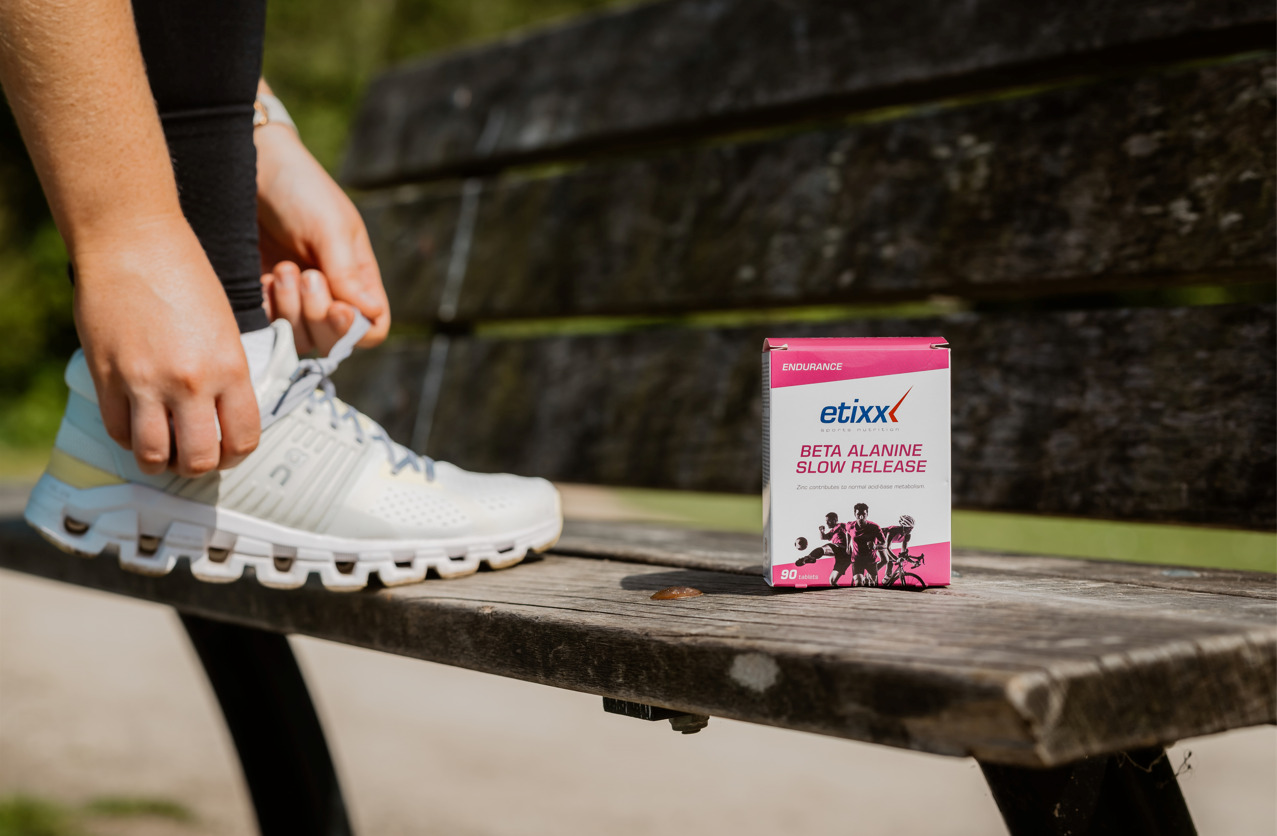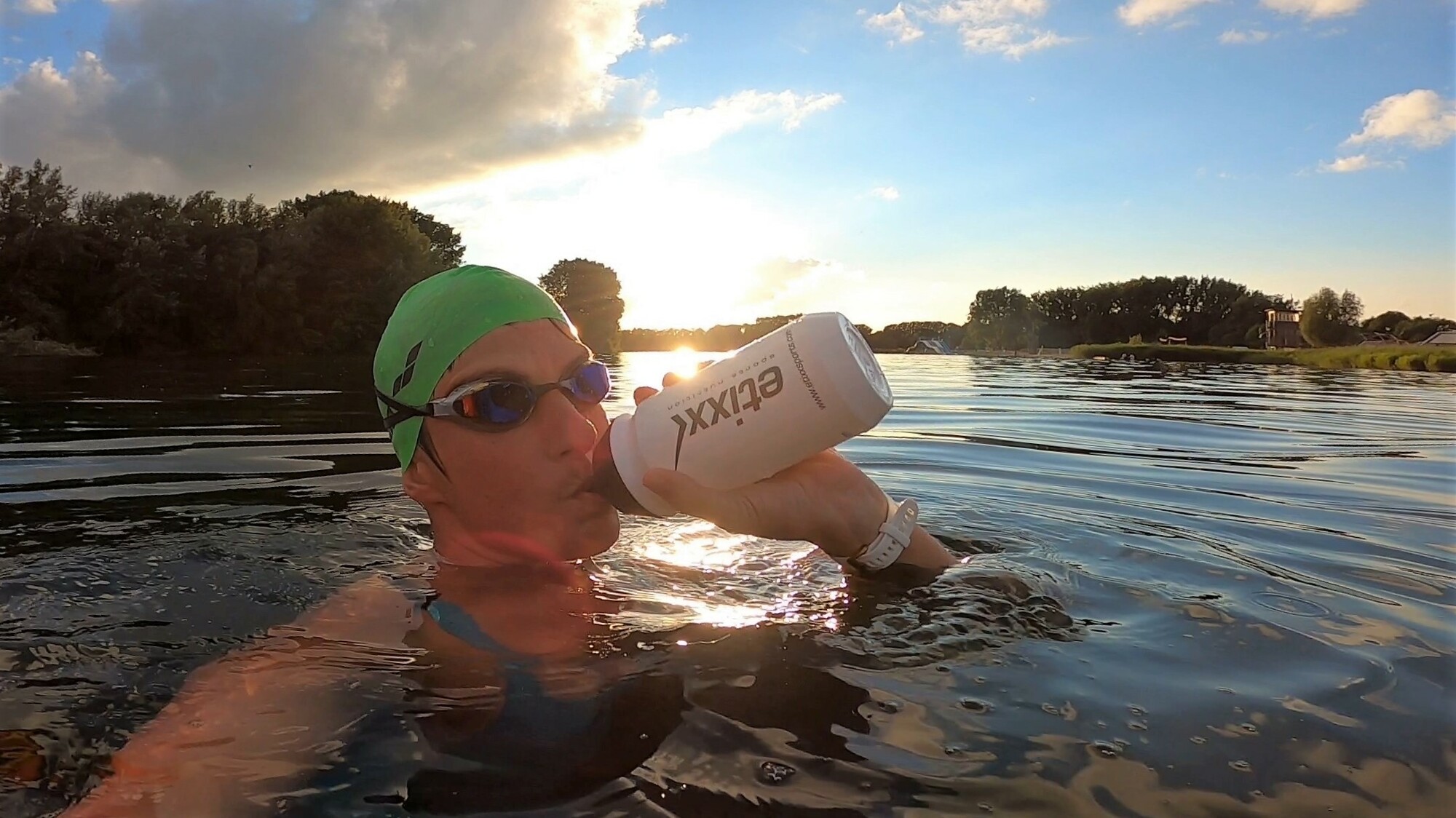To the finish line without acidification with beta-alanine
Friday 11 February 2022

Sore muscles is something every athlete has to deal with from time to time. It often causes a lot of frustration because no matter how much you want to keep going, your muscles protest. Increasing intensity causes your muscles to fill up with lactic acid, making them feel (acutely) sore and burning. They become fatigued and lose strength, forcing you to reduce the intensity of the exercise effort. But did you know that you can counteract premature muscle acidification during exercise?
Muscle acidification during exercise
To answer the above question, it is of course important to know exactly what muscle acidification means. As soon as we increase the intensity during a gentle aerobic exercise, for example by climbing a mountain or accelerating, lactic acid is formed in the muscles. This lactic acid immediately breaks down into lactate and H+ ions. With the lactate, our muscles can cope perfectly and it also provides energy to the muscles again. It is those acidic H+ ions that are the culprit and cause the pH value in the muscle to drop. For optimal muscle function, the pH value should be around the neutral point (±7). It goes without saying the more intense the exercise, the more of such acidic H+ ions are formed and thus the faster the pH value in the muscle will drop. This drop in pH quickly causes the muscle to lose contractility and strength, which can lead to symptoms of acidification including stiffness, muscle tension,...
Fortunately, our body has pH buffers in the muscle to 'neutralise' these H+ ions and prevent acidification. The better these pH buffers work in the muscle, the more of those H+ ions can be neutralised. This will ensure that acidification in the muscle can be delayed which can obviously improve heavy/anaerobic sports efforts.
pH buffer carnosine
Carnosine is the main pH buffer in muscle and can be ingested through consumption of meat, poultry and fish. A major disadvantage of the substance carnosine is that it cannot be absorbed directly into the muscle because it is already broken down in the gastrointestinal system into 2 amino acids: histidine and beta-alanine.
Histidine is sufficiently present in the body in most cases but to enjoy the optimal effect of muscle carnosine, a sufficient presence of beta-alanine is crucial. Scientific studies show the total amount of beta-alanine ingested is the main determinant of how much muscle carnosine increases. Thus, chronic beta-alanine supplementation over several weeks is necessary to increase muscle carnosine levels.
Beta-alanine
Since the last 10 years, beta-alanine has become 1 of the most popular sports nutritional supplements. Beta-alanine is an amino acid produced by our liver, but also ingested in small amounts on a daily basis through consumption of meat and fish.
Research shows that beta-alanine is optimally taken at ~4 to 6 grams per day for at least 4 weeks. It is recommended to spread some smaller doses (max 2g/intake) throughout the day and/or choose to use 'slow release' beta-alanine to minimise the known side effect paresthesia (i.e. a harmless but annoying tingling of the skin). When beta-alanine is taken with a carbohydrate-rich meal/snack, carnosine loading is further optimised. After prolonged consecutive use, a break of 6-15 weeks is recommended.
Athletes who perform high-intensity efforts of at least 30 seconds to a maximum of 10 minutes, in which acidification plays an important role in the occurrence of fatigue, therefore benefit most from beta-alanine use. However, even during efforts of longer duration characterised by frequent tempo increases, higher carnosine levels (thanks to beta-alanine intake) can potentially benefit. Hence, beta-alanine is recommended not only to explosive athletes and team athletes, but also to endurance athletes completing high-intensity training sessions and competitions.
Performance-enhancing effect of beta-alanine
There are quite a few scientific studies that have investigated the performance-enhancing effect of a beta-alanine cure in athletes. The study below is a good example. The graph clearly shows that the athletes (in this study 800m runners) who had taken a chronic beta-alanine course of 4 weeks (6g/day) were able to improve their running performance by over 3 seconds. The athletes who had not taken a beta-alanine regimen (placebo) showed little to no improvement in their running performance by comparison.

Sign up for our newsletter and receive a 15% discount in your mailbox
Search



